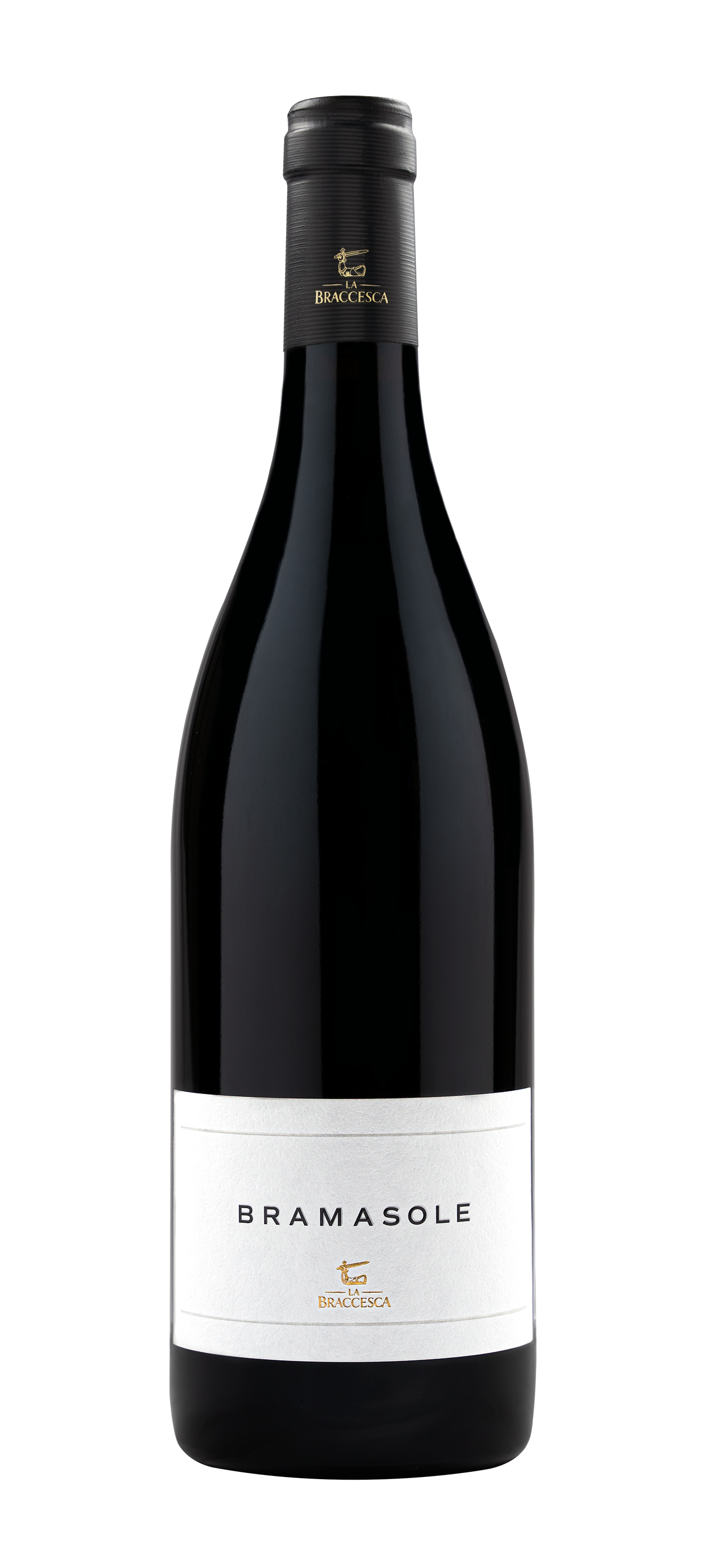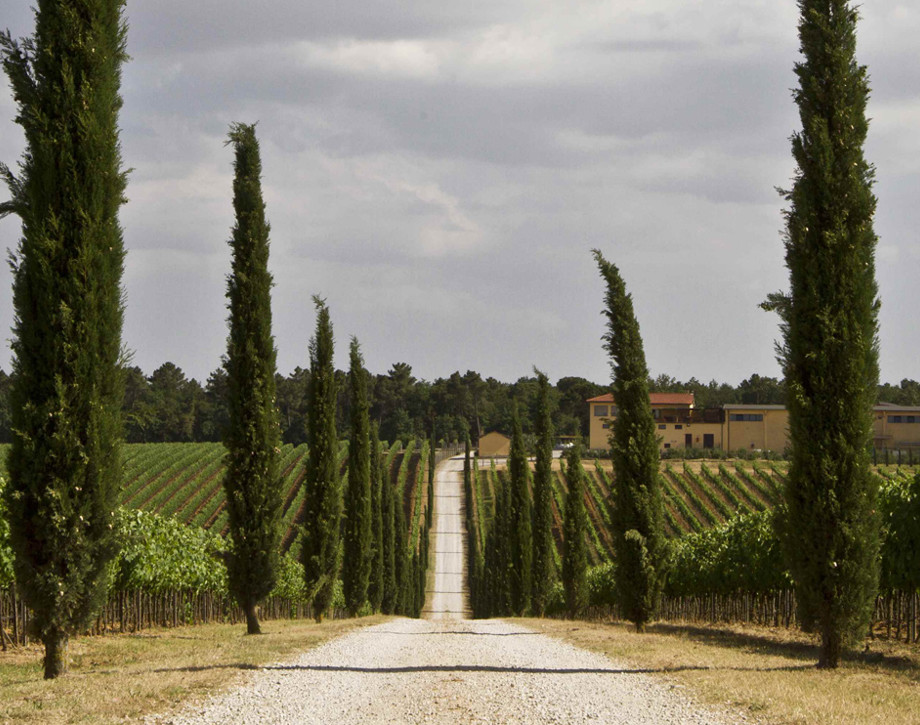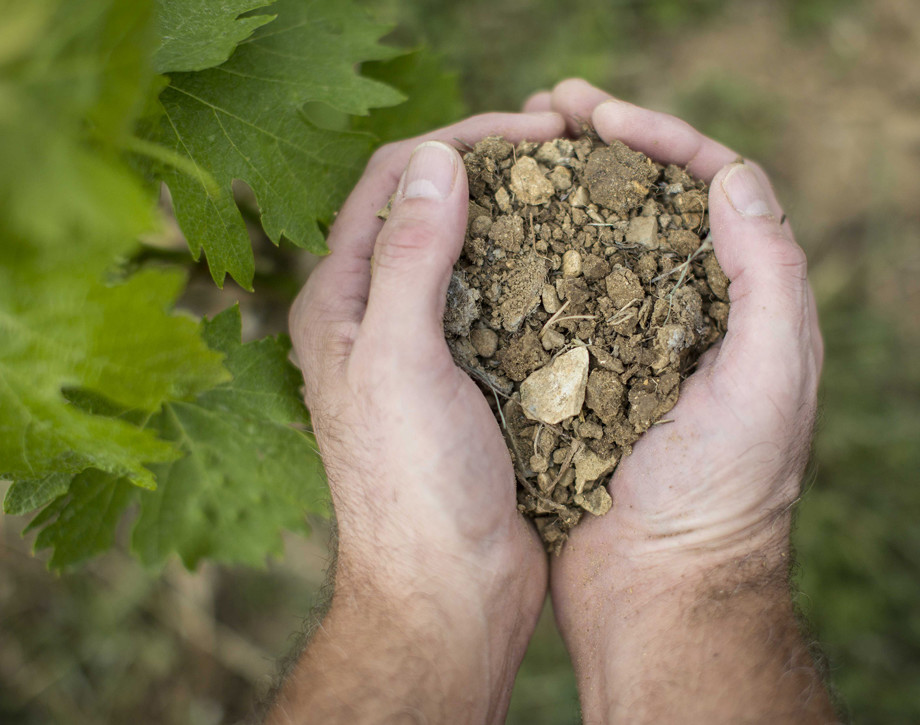Bramasole

Climate
The winter of 2008-2009 was quite rainy but with rather mild temperatures. Bud burst took place during the first half of April. A notable drop in temperatures from late April to mid-May slowed the growth of vegetation, but the subsequent rise towards late May and early June brought the development of the vines back into balance and bud set took place, as usual, in early June. Frequent rains in late spring and early summer favored the development of the vegetation. High temperatures from mid-July until early August led to an anticipated ripening of the grapes. A dry and mild September led to a full and excellent ripening of the crop both in terms of the sugars and from a physiological point of view as well. The harvested grapes were full of fruit and sufficiently structured.
Vinification
The picking of the grapes for Bramasole began around the middle of September. After destemming and pressing, the grapes macerated on their skins at low temperatures to extract the aromas in solution, and temperatures were then allowed to rise to a level of 82° Fahrenheit (28° centigrade). After 18 days of fermentation and skin contact the wine went into new small oak barrels where it finished its fermentation and subsequently went through a complete malolactic fermentation. Aging in barrel lasted approximately 16 months and the finished wine was bottled during the spring of 2013.
Historical Data
The estate’s name comes from the historical farm that once stood there, owned by the Count of Bracci, whose coat of arms appears on the estate’s logo; an arm covered with armor brandishing a sword. The property extends over an area of 508 hectares (1255 acres) and the vineyards cover an area of 340 hectares (840 acres) divided into two blocks: the first is 366 hectares (904 acres) of which 237 (585 acres) are planted with vineyards and is located on the border between the cities of Montepulciano and Cortona. The other block is 142 hectares (350 acres) of which 103 (254 acres) are planted with vineyards, it extends all the way to Montepulciano encompassing three of the most famous parcels of land known for the production of great red wines: Cervognano, Santa Pia and Gracciano. Bramasole is made from the sunniest part of the vineyard in one of Cortona’s best areas for the production of premium quality Syrah. Bramasole is a wine able to evolve over time and reflect this territory and its long-standing winemaking traditions using a new untraditional variety. Bramasole’s first vintage was 2000.
Tasting Notes
A wine which is both rich and elegant, the 2009 Bramasole is characterized by aromas of black fruit and tobacco which, on the palate, fuse with the typical notes of liquorice and black pepper which characterize Syrah. The finish is full and supple and very long as well.
Awards
Antonio Galloni 92/100 USA

The Wine
Bramasole is made from the sunniest part of the vineyard, from the Antinori family’s innovative spirit and from one of Cortona’s best areas for producing premium quality Syrah. Bramasole is a wine able to evolve over time and reflect this territory and its long-standing winemaking traditions using a new untraditional variety. The first vintage to be produced was the 2000 vintage.

Climate
The winter of 2008-2009 was quite rainy but with rather mild temperatures. Bud burst took place during the first half of April. A notable drop in temperatures from late April to mid-May slowed the growth of vegetation, but the subsequent rise towards late May and early June brought the development of the vines back into balance and bud set took place, as usual, in early June. Frequent rains in late spring and early summer favored the development of the vegetation. High temperatures from mid-July until early August led to an anticipated ripening of the grapes. A dry and mild September led to a full and excellent ripening of the crop both in terms of the sugars and from a physiological point of view as well. The harvested grapes were full of fruit and sufficiently structured.
Vinification
The picking of the grapes for Bramasole began around the middle of September. After destemming and pressing, the grapes macerated on their skins at low temperatures to extract the aromas in solution, and temperatures were then allowed to rise to a level of 82° Fahrenheit (28° centigrade). After 18 days of fermentation and skin contact the wine went into new small oak barrels where it finished its fermentation and subsequently went through a complete malolactic fermentation. Aging in barrel lasted approximately 16 months and the finished wine was bottled during the spring of 2013.
Historical Data
The estate’s name comes from the historical farm that once stood there, owned by the Count of Bracci, whose coat of arms appears on the estate’s logo; an arm covered with armor brandishing a sword. The property extends over an area of 508 hectares (1255 acres) and the vineyards cover an area of 340 hectares (840 acres) divided into two blocks: the first is 366 hectares (904 acres) of which 237 (585 acres) are planted with vineyards and is located on the border between the cities of Montepulciano and Cortona. The other block is 142 hectares (350 acres) of which 103 (254 acres) are planted with vineyards, it extends all the way to Montepulciano encompassing three of the most famous parcels of land known for the production of great red wines: Cervognano, Santa Pia and Gracciano. Bramasole is made from the sunniest part of the vineyard in one of Cortona’s best areas for the production of premium quality Syrah. Bramasole is a wine able to evolve over time and reflect this territory and its long-standing winemaking traditions using a new untraditional variety. Bramasole’s first vintage was 2000.
Tasting Notes
A wine which is both rich and elegant, the 2009 Bramasole is characterized by aromas of black fruit and tobacco which, on the palate, fuse with the typical notes of liquorice and black pepper which characterize Syrah. The finish is full and supple and very long as well.
Awards
Antonio Galloni 92/100 USA

Tenuta La Braccesca
La Braccesca spreads over 508 hectares where the ancient farm of the Bracci counts once stood, hence the name of the estate and its coat of arms: an arm covered in armour holding a sword. Since 1990 the Marchesi Antinori have owned the estate. The total surface area of the vineyards is 334 hectares divided into two parts: the first, of 232 hectares is located on the border between the municipalities of Montepulciano and Cortona. The other body, 102 hectares of which are planted with vines, extends as far as Montepulciano between three of the most renowned sub-zones for the production of great red wines: Cervognano, Santa Pia and Gracciano.

Soil
Clay loam
















